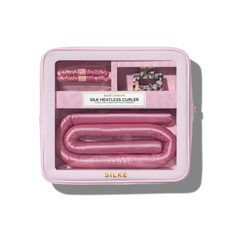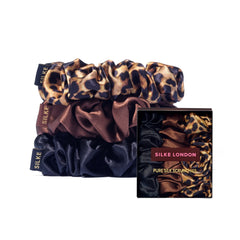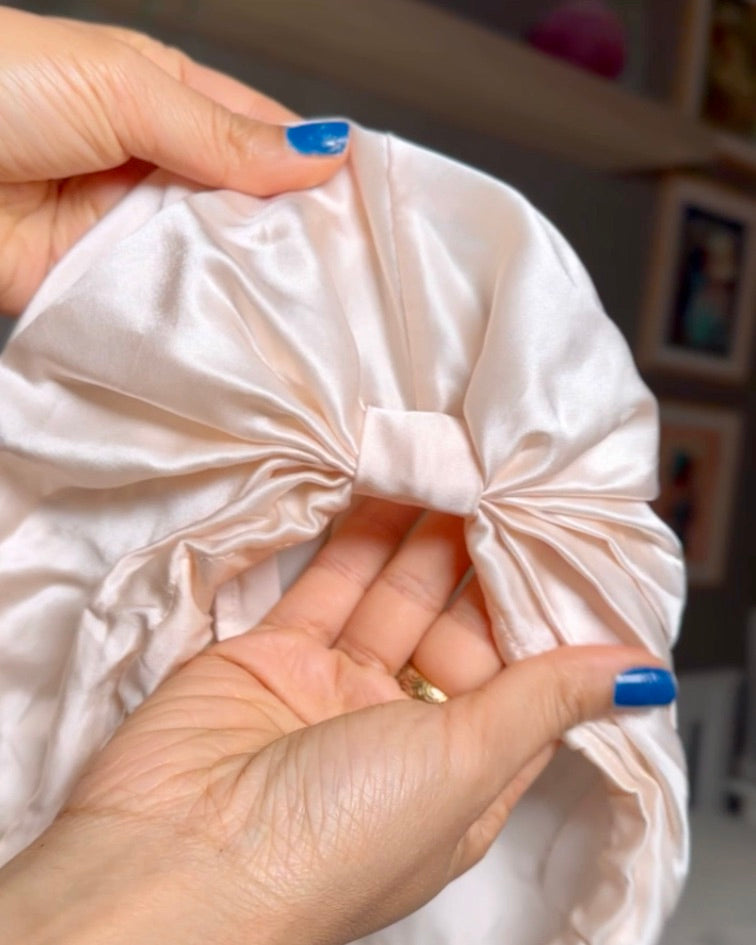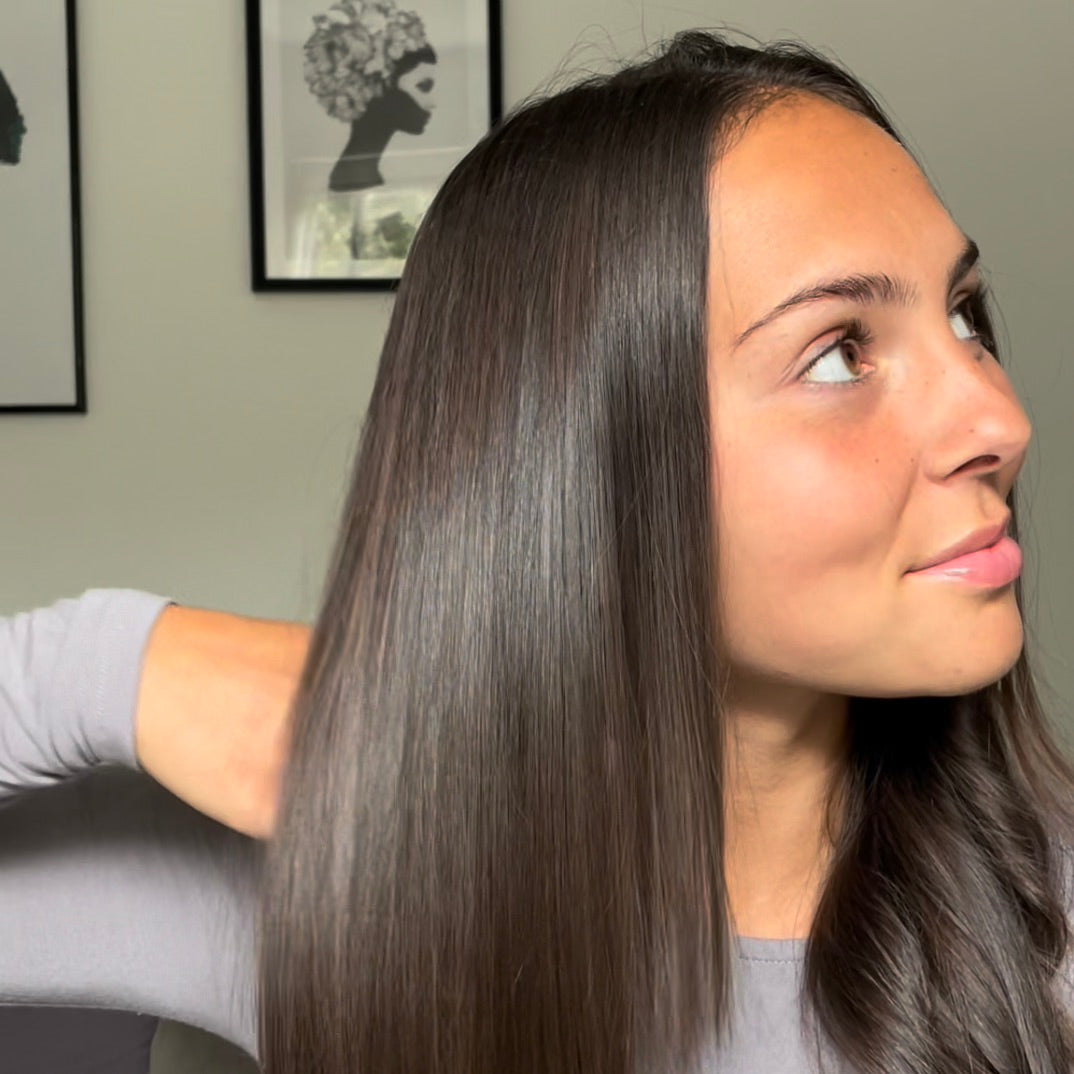
Do Hair Dyes Damage Hair?
As of 2023, 75% of women in the USA dye their hair. Add that to the £321 million spend on hair dye recorded in the UK throughout 2019, and it’s safe to say that more of us are colouring our hair frequently than not.
It’s common knowledge that regular bleaching, or bleaching incorrectly, causes damage to the hair - but is that the same for all of us turning to hair colouring services to keep our shade topped up?

Bleaching vs. Colouring: What’s the difference?
Maria Sotiriou, co-founder of SILKE London and hairstylist with over 37 years of experience, can explain the difference between the process of bleaching versus colouring. She says: “First of all, it’s important to understand the hair’s cortex and overall structure before we break down what’s happening during different colouring services. The best way to describe it is the cortex sandwiched between the hair cuticle, which is the outermost layer of the hair, and medulla which is the centre portion of the hair. The cortex is the thickest layer and contains your hair’s colour pigment. When we’re colouring or bleaching the hair we’re messing with the cortex, either adding or taking away from it depending on the desired result.”
She goes onto explain: “When we’re working with bleach and lightening the hair, we add bleach into the hair’s cortex which pushes out the hair’s colour pigment, natural or not, hence why the hair will always get lighter when bleach is applied. Bleach doesn’t deposit colour, that’s an important factor if we’re talking differences between bleaching and colouring.
When we’re colouring the hair we’re doing the complete opposite by depositing colour directly into the cortex, we’re adding instead of taking away”.

Salon Colouring vs. Box-Dye
Now that we’re up to speed on the differences and technicalities of bleaching and colouring, let's delve into the difference between salon colour formulation and at-home colouring options.
Maria says: “There’s a big difference between salon colour and box dyes, mainly because they’re formulated to do two very different things, even though to the client, they may seem to be the same thing.
"Professional colour used in salons is formulated for the colourist to be able to mix, tailor and customise colour for their client. Therefore, the colour formulations should be able to be combined to make different tones and shades so no two colour creations are the same, as opposed to at-home box dye options, which are formulated to be fast and easy to use.
"It’s not just the colour result that colourists will customise their formulations, for there are lots of other factors to consider. For example, thickness of the hair strands, presence of grey hair, previously colour treated hair and porosity levels. By taking all of this into consideration and mixing their colour formulations accordingly they’re going to get an elevated finish, reflective colour shades, and most importantly, consistent coverage once the service is finished.
Aside from the aesthetic and finish that comes with salon colour as opposed to at-home options, Maria breaks down why they’re different when it comes to creating damage to the hair. She says: “As we’ve already established, box dye options have a generic aim of quickly and easily loading colour pigment into the hair’s cortex to somewhat match the colour shown on the front of the box. In order to do this, the formulation is high strength meaning each time you use it, it deposits another layer of colour into the cortex which builds and builds as time goes on.
"It’s for this reason that removing or changing up box dyed colour is incredibly difficult, especially darker tones or colour with red undertones. Clients tend to reach for them as a quick fix, but they can cause major problems for colourists later down the line. Regardless of whether you’re hoping to change your colour in the future, which may not be possible, using at-home dyes can create colour banding and patching colour, along with a dull finish, all whilst dehydrating your hair as the result. As we all know, dehydrated hair leads to snapping, snagging and split ends. Not worth it for a quick at-home option!”

Caring For Your Colour
Of course, colouring of any kind has the potential to cause damage to your hair when done incorrectly, but there are lots of things you can do before the colouring process to give your hair the best chance of retaining its integrity, and looking its best, shiny self, post-appointment.
Maria explains: “The most important thing you need to pay attention to pre-colour appointment is your hair’s hydration. The more hydrated your hair is to start with, the better your colour service is going to go! This can be achieved by utilising products that state they’re for hydration or moisture. I like to make sure I have those across every part of my hair wash routine including my shampoo, conditioner, and masks for maximum efficiency.
I also always recommend pre-hair wash deep oil treatments once a week, whether you’re colouring your hair, or are suffering from dryness, this is a great step to utilise to improve your hair and scalp health. How I do it is by picking my favourite oil or scalp mask, I love natural or singular ingredient options. I work this into my hair and scalp and leave it in overnight, or for a few hours. My personal preference is to wear it to the gym, as the extra heat from your scalp will really help to activate the natural benefits from the oil. If you don’t have the option to utilise your body's natural temperature for that, you can always hold a blow-dryer over your head to gently warm the oil treatment through before getting in there with a blood flow stimulating head massage.
Once you’re done with your oil treatment, simply continue with your hair wash routine, being sure to shampoo your hair twice to get all that oil residue off your scalp and out of your hair. The oil, paired with the stimulation of your scalp will give your hair an amazing boost of hydration, and leave you with shiny, healthy, and strong hair if repeated over time.”

Of course, the ultimate hair product to reach for to boost your hair’s hydration and improve porosity for your colour appointment and beyond is the SILKE London Hair Wrap. Maria explains: “Wearing your Hair Wrap nightly will help to keep your cuticles flat and supple, locking in hydration. The amazing natural properties of 100% silk work to utilise the natural oils being produced at the scalp, and instead of letting your roots hoard it all creating an unwanted greasy look, cocooning your hair in silk encourages these oils to be evenly distributed from root to tip, allowing your dryer more porous ends, to benefit from the moisture and hydration creating your hair’s very own hydration ecosystem. If you wear your Hair Wrap every night you really shouldn’t have to reach for very many additional hydrating products or treatments!”
At SILKE we’re all about minimal effort with maximum results, and considering we spend a third of our lives in bed, how else would we suggest readying yourself and your hair for that all important colour appointment. The answer to our opening question is ‘yes’, colouring can in fact damage your hair, but by taking the right precautions beforehand and investing time into the correct aftercare, you can enjoy your dream colour minus the additional damage and fade afterwards! What more could you ask for?
Love, SILKE xo









Leave a comment
This site is protected by hCaptcha and the hCaptcha Privacy Policy and Terms of Service apply.